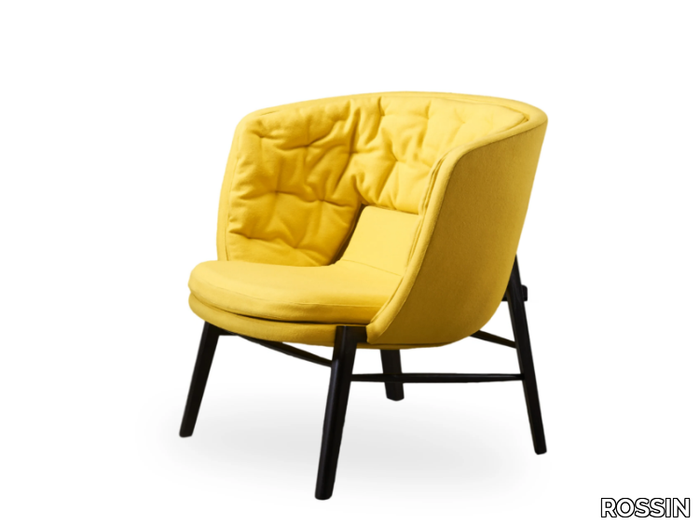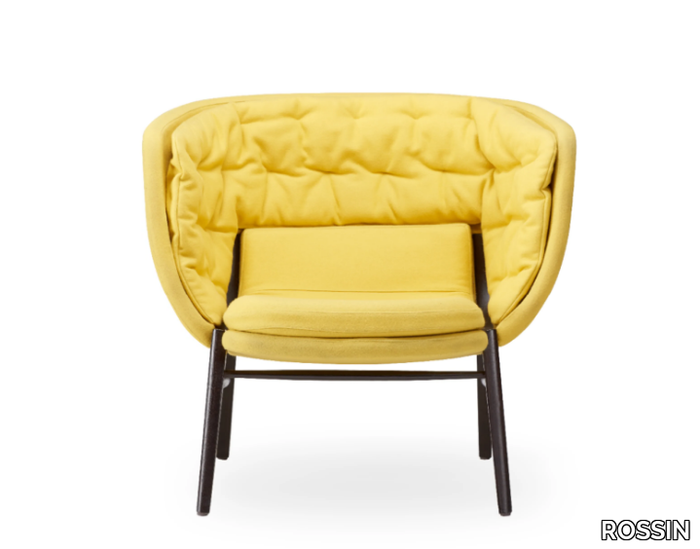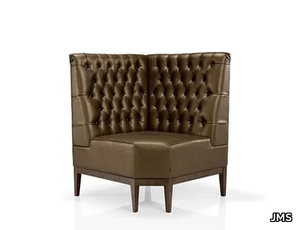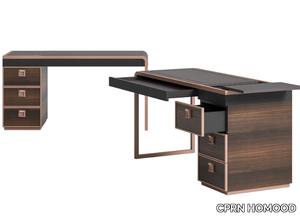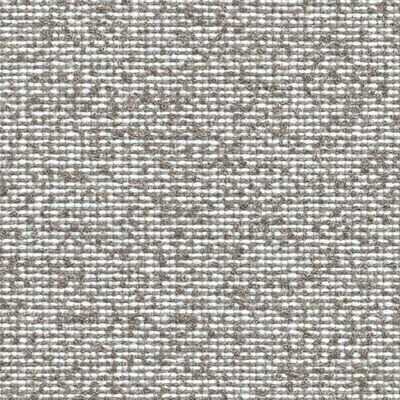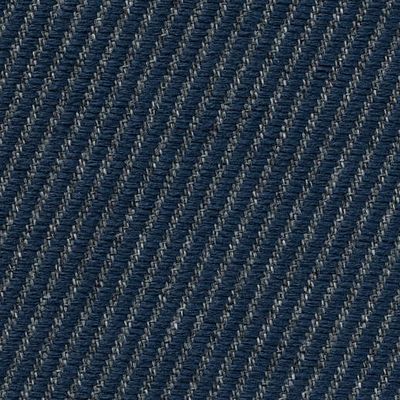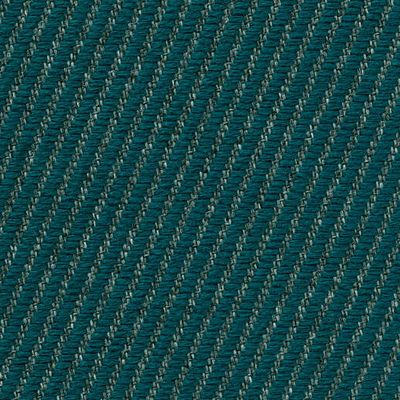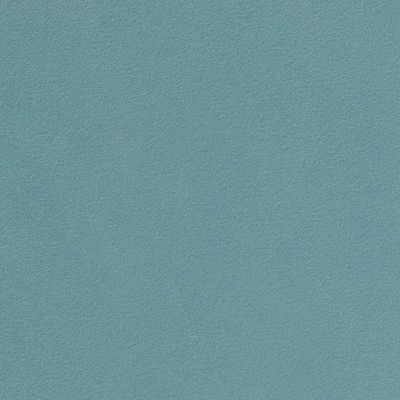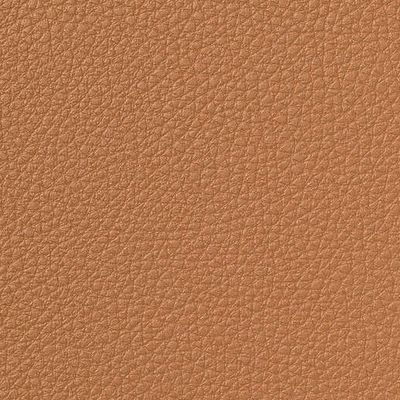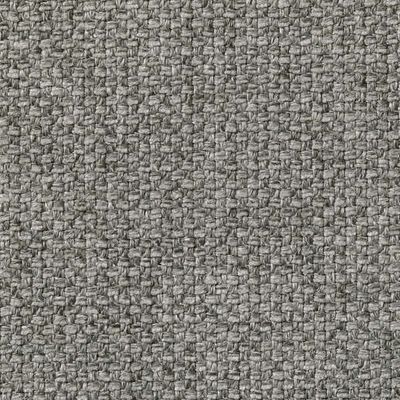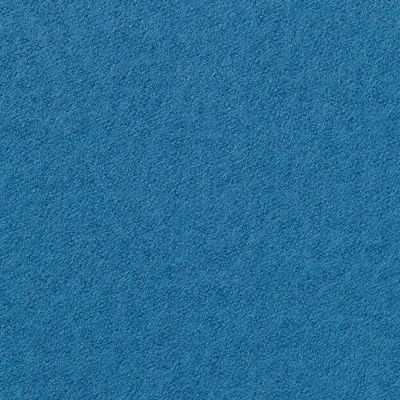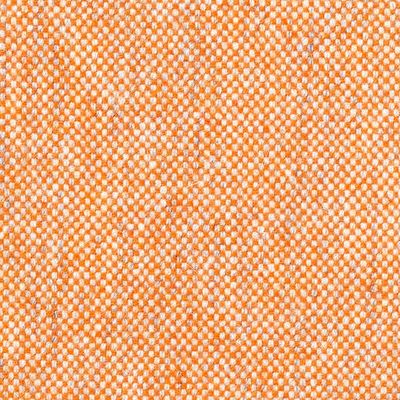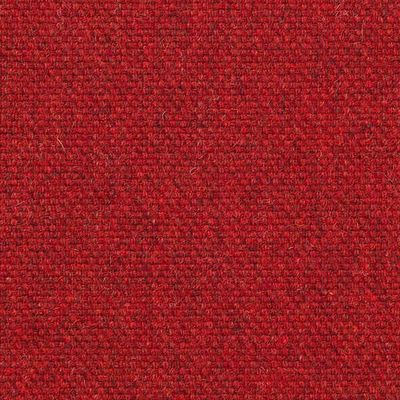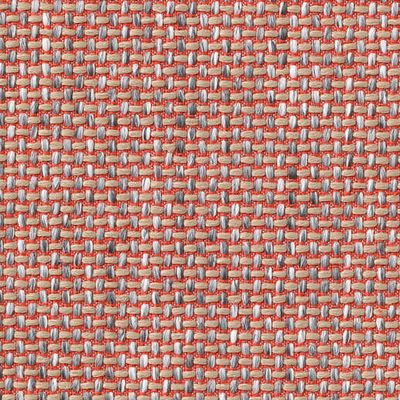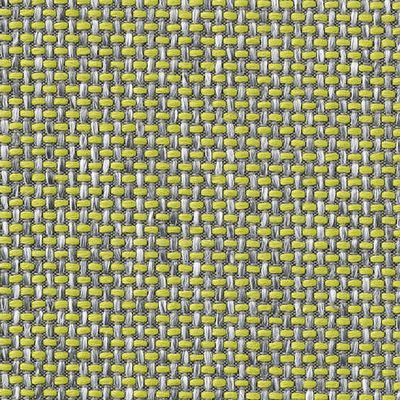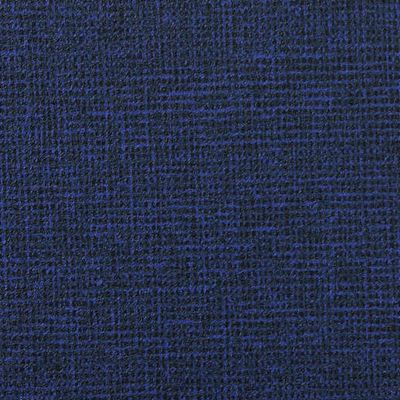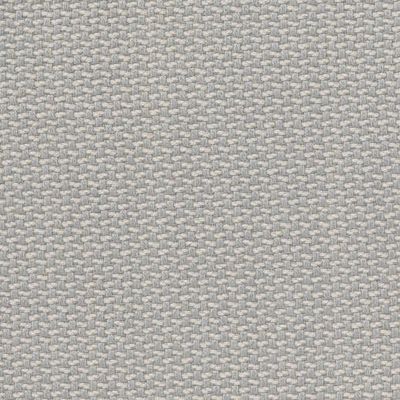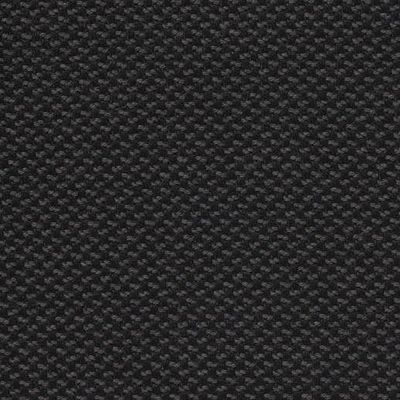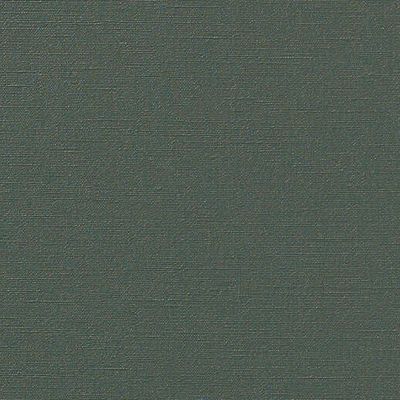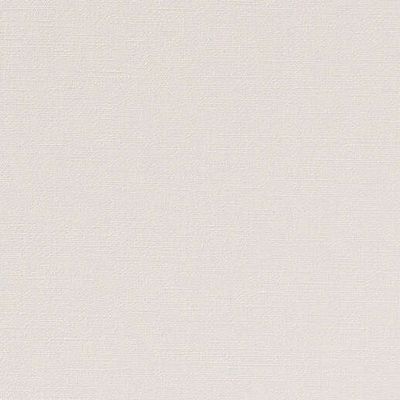PRODUCT DESCRIPTION
Here’s the rephrased and expanded product description, including a concise supplier overview and mention of the 3D file availability: *"This elegant armchair features a sturdy metal frame with belts and cold-moulded fire-retardant polyurethane foam padding, paired with a fixed cover and a removable seat cushion for easy maintenance. The quilted back cushion is filled with soft acrylic fiber, ensuring comfort, while the base is crafted from solid ash, available in natural or stained finishes. Designed with a domestic architecture-inspired outer shell and four petite legs, this piece combines style and relaxation, offering a serene escape from daily hustle. A 3D file of the product is available for download. Part of the CLEO series, the ROSSIN armchair reflects the brand’s commitment to sophisticated design—founded in 1979, ROSSIN is a renowned Italian supplier of high-quality furniture and interior solutions."*
SUPPLIER: ROSSIN
COLLECTION: CLEO WOOD
TYPE: FURNITURE

OTHER SUPPLIERS
A wide range of product from near to 3,000 suppliers around the world.



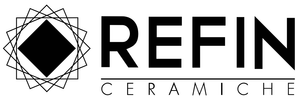
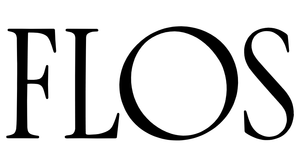

Other Products From This Supplier
A wide range of product from furniture to finishes to meet the desire of all designers.
RAIL - Contract bench with high backrest _ ROSSIN
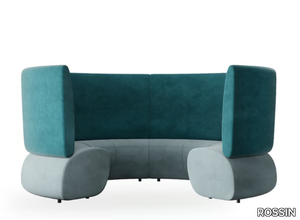
ROSSIN > Sofa
**Rail** is a sleek and versatile seating solution designed primarily for the hospitality and catering industry, blending aesthetics and functionality in perfect harmony. Its modular design encourages creativity, allowing users to effortlessly configure and reconfigure their space for dining and socializing. Crafted with a solid wood and plywood frame, flame-retardant polyurethane foam, fibre wadding, and a fixed cover, Rail ensures both durability and comfort, while plastic feet add stability. Custom-made options are also available to suit specific needs. Additionally, a downloadable 3D file of Rail is provided for easy visualization and planning. **Supplier Overview:** Founded in 1979, ROSSIN is a renowned Italian interior design brand celebrated for its high-quality, stylish furniture and accessories. For more details, visit [www.rossin.it](http://www.rossin.it).
SIGNA - Sled base fabric easy chair with armrests _ ROSSIN
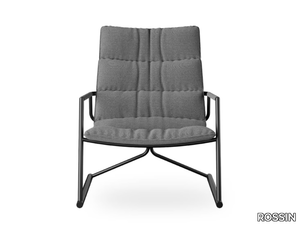
ROSSIN > Chair
**Signa** is a sleek and stylish sled chair featuring armrests and available in fabric or premium leather upholstery, with options for a high or low backrest to suit different preferences. The chair’s shell is crafted from plywood with reinforced belts and polyurethane foam, layered with soft fibre wadding for added comfort, while the fixed cover ensures durability. Its sturdy base is made from varnished metal tubing, combining strength with a refined aesthetic. Blending athletic and geometric influences, Signa’s design highlights meticulous craftsmanship, balancing elegance and ergonomics for superior comfort. Ideal for elevating living spaces, this lounge armchair adds a touch of international sophistication, available in plush padding or supple core leather. A downloadable 3D file of the product is also available for design and planning purposes. For more details, visit **ROSSIN**, a renowned Italian design house celebrated for its high-end furniture since 1979, at [www.rossin.it](http://www.rossin.it).
SIGNA - Sled base fabric easy chair with armrests _ ROSSIN
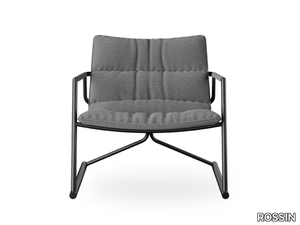
ROSSIN > Chair
**Signa** is a sleek and stylish sled chair featuring armrests and available in either fabric or premium leather upholstery, with options for a high or low backrest to suit different preferences. The chair’s shell is crafted from plywood with reinforced belts and polyurethane foam, layered with soft fibre wadding and a fixed cover, while the sturdy base is made from varnished metal tubing. Its design blends athletic and geometric elements, highlighting meticulous craftsmanship and ergonomic comfort for a luxurious seating experience. Ideal for elevating living spaces, lounges, or commercial interiors, the Signa chair is offered in plush padding or core leather finishes. A downloadable 3D file of the product is available for design and planning purposes. For more details, visit **ROSSIN**, a renowned Italian furniture supplier since 1979, known for its elegant and contemporary designs. Explore their collection at [www.rossin.it](http://www.rossin.it).
SIGNA - Sled base leather easy chair with armrests _ ROSSIN
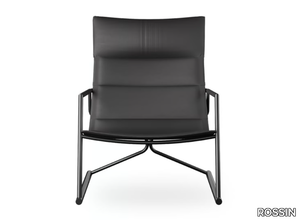
ROSSIN > Chair
**Signa** is a sleek and stylish sled chair featuring armrests and available in fabric or premium leather upholstery, with options for a high or low backrest to suit different preferences. The chair’s shell is crafted from plywood with reinforced belts and polyurethane foam, layered with soft fibre wadding for added comfort, while the fixed cover ensures durability. Its sturdy base is made from varnished metal tubing, blending strength with elegance. Combining athletic and geometric influences, Signa’s design highlights meticulous craftsmanship, seamlessly merging aesthetics and ergonomics for superior comfort. Ideal for elevating living spaces, this lounge armchair adds a refined, international touch to any setting, available in plush padding or supple core leather. A downloadable 3D file of the product is also available for design and planning purposes. **Supplier Info:** Founded in 1979, ROSSIN is a renowned Italian interior design brand celebrated for its high-end furniture and timeless, elegant craftsmanship. Explore their collection at [www.rossin.it](http://www.rossin.it).
SIGNA - Sled base leather easy chair with armrests _ ROSSIN
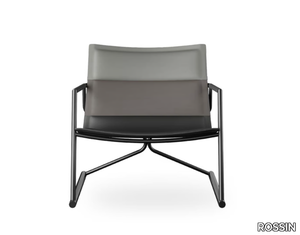
ROSSIN > Chair
**Signa** is a sleek and stylish sled chair featuring armrests and available in fabric or premium leather upholstery, with options for a high or low backrest to suit different preferences. The chair’s shell is crafted from plywood with reinforced belts and polyurethane foam, layered with soft fibre wadding for added comfort, while the fixed cover ensures durability. Its sturdy metal tube base is elegantly varnished, blending seamlessly into modern interiors. Combining athletic and geometric shapes, Signa showcases meticulous craftsmanship, balancing aesthetics and ergonomics for superior comfort. Ideal for elevating living spaces, this lounge armchair adds a refined, international touch—available in plush padding or luxurious core leather. A downloadable 3D file of the product is also available for design planning. **ROSSIN**, a renowned Italian interior design supplier since 1979, is celebrated for its high-quality, innovative furniture. For more details, visit [www.rossin.it](http://www.rossin.it).
SIGNA - Upholstered fabric footstool _ ROSSIN
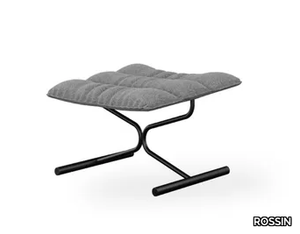
ROSSIN > Pouf
Here’s the rephrased and expanded product description, including a concise supplier overview and mention of the 3D file: **"Signa is an elegantly upholstered footrest, available in fabric or premium leather, featuring a plywood shell reinforced with belts, polyurethane foam, and fibre wadding for plush comfort. Its fixed cover and varnished metal tube base highlight a sleek, geometric design that blends athletic inspiration with artisanal craftsmanship, offering both ergonomic support and refined aesthetics. Ideal for elevating living spaces into sophisticated lounges, it comes in softly padded or core leather options. A downloadable 3D file is available for detailed visualization. Crafted by ROSSIN, a renowned Italian design house since 1979, celebrated for its high-end furniture and timeless contemporary style."** (Note: The supplier description is condensed into one impactful sentence while preserving key details about ROSSIN’s heritage and design ethos.)
SIGNA - Upholstered leather footstool _ ROSSIN
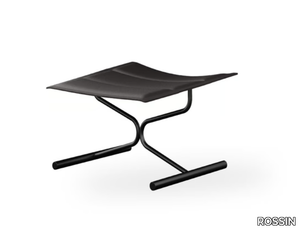
ROSSIN > Pouf
Here’s your rephrased and expanded product description, including a concise supplier overview and mention of the 3D file availability: **"Signa is an elegantly upholstered footrest, available in fabric or premium leather, featuring a plywood shell reinforced with belts, polyurethane foam, and fibre wadding for plush comfort. Its fixed cover and varnished metal tube base blend durability with minimalist sophistication. The design merges athletic and geometric influences, highlighting meticulous craftsmanship and ergonomic excellence for a refined lounging experience. Ideal for elevating living spaces, it comes in softly padded or core leather options. A downloadable 3D file of the product is available for detailed preview. Crafted by ROSSIN, a renowned Italian design house since 1979, celebrated for its high-end furniture and timeless aesthetic. Explore more at www.rossin.it."** (Note: I condensed the supplier details to one impactful sentence while preserving key brand credentials. Let me know if you'd like further tweaks!)
SAMURAI - Fabric armchair with armrests _ ROSSIN
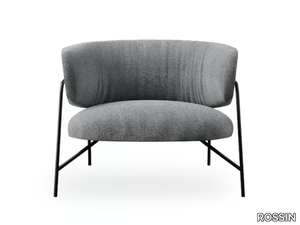
ROSSIN > Armchair
**Product Description:** The *Samurai* is a stylish fabric armchair available in both low and high-back designs, featuring a sturdy frame crafted from solid wood and plywood for durability. Upholstered with flame-retardant polyurethane foam and soft fibre wadding, it ensures both comfort and safety, while the fixed cover and sleek black-varnished metal base add a refined touch. With its fluid lines and inviting silhouette, the *Samurai* collection blends lightness, elegance, and timeless appeal, making it ideal for restaurants, bistros, lounges, and reception areas. A downloadable 3D file of the product is available for design and planning purposes. **Supplier Description:** ROSSIN, a renowned Italian interior design brand since 1979, is celebrated for its high-quality, innovative furniture and accessories, combining modern elegance with functional craftsmanship.
SAMURAI - Fabric armchair high-back _ ROSSIN
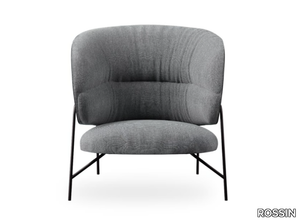
ROSSIN > Armchair
**Product Description:** The **Samurai** fabric armchair is available with a low or high backrest, designed for both comfort and style. Its sturdy frame is crafted from solid wood and plywood, while the seat features flame-retardant polyurethane foam cushioned with soft fibre wadding for added comfort. The fixed fabric cover and sleek black-varnished metal base complete its refined look. With fluid lines and a soft silhouette, the Samurai collection combines lightness, elegance, and timeless charm, making it ideal for restaurants, bistros, lounges, and reception areas. A downloadable 3D file of the product is available for design and visualization purposes. For more details, visit the manufacturer’s page: **SAMURAI | Fabric Armchair – ROSSIN**. **Supplier Description:** **ROSSIN**, a renowned Italian interior design brand since 1979, is celebrated for its high-quality, stylish furniture and accessories, blending modern elegance with functional craftsmanship.
SAMURAI - Fabric small sofa _ ROSSIN
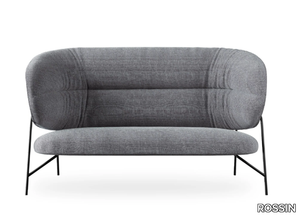
ROSSIN > Sofa
Here’s the rephrased and expanded product description, including the supplier details and mention of the 3D file: *The Samurai fabric sofa, available with a high or low backrest, combines fluid lines and soft silhouettes to create a comfortable and enveloping seating experience. Crafted with a solid wood and plywood frame, flame-retardant polyurethane foam, and fibre wadding, it features a fixed cover and a sleek black-varnished metal base. This collection balances lightness, refined elegance, and timeless charm, making it ideal for restaurants, bistros, reception areas, and lounges. A downloadable 3D file of the product is available for design planning. Manufactured by ROSSIN, a renowned Italian design company since 1979, known for its high-quality, stylish furniture.* (Kept the supplier description concise while maintaining key details.)
SAMURAI - Fabric small sofa _ ROSSIN
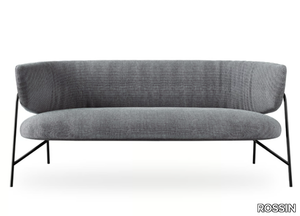
ROSSIN > Sofa
**Product Description:** The *Samurai* is a stylish fabric sofa available with a high or low backrest, featuring a sturdy frame crafted from solid wood and plywood, upholstered with flame-retardant polyurethane foam and fibre wadding for enhanced comfort. Its fixed cover and sleek black-varnished metal base add a touch of modern sophistication. With fluid lines and soft silhouettes, the *Samurai* collection combines lightness, refined elegance, and timeless charm, making it ideal for restaurants, bistros, reception areas, and lounges. A downloadable 3D file of the product is available for design and planning purposes. For more details, visit the manufacturer’s page: [SAMURAI | Fabric Small Sofa – ROSSIN](https://www.rossin.it). **Supplier Description:** ROSSIN, a renowned Italian interior design supplier since 1979, is celebrated for its high-quality, innovative furniture and accessories, blending modern elegance with functionality.
SAMURAI - Round steel and wood coffee table _ ROSSIN
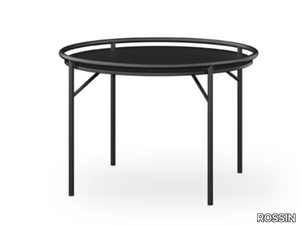
ROSSIN > Coffee table
Here’s the rephrased and expanded product description, including a concise supplier overview and mention of the 3D file: *The Samurai coffee table combines steel and wood in a sleek, round design, available in two sizes to suit any space. Its frame is crafted from solid wood and plywood, topped with flame-retardant polyurethane foam and fibre wadding for durability, while the fixed cover and black-varnished metal base add a touch of refined elegance. Part of the Samurai collection, this piece features fluid lines and soft silhouettes, blending lightness, timeless charm, and formal rigour—ideal for restaurants, bistros, lounges, or residential settings. A downloadable 3D file is available for precise planning. Manufactured by ROSSIN, a renowned Italian design house since 1979, known for its innovative furniture and accessories.* (Note: I condensed the supplier details to one sentence while preserving key info—adjust as needed!)
SAMURAI - Upholstered fabric chair _ ROSSIN
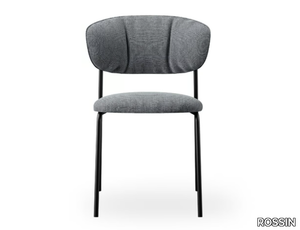
ROSSIN > Chair
**Samurai** is a versatile fabric chair, available with or without armrests, featuring a sturdy frame crafted from solid wood and plywood. Upholstered with flame-retardant polyurethane foam and soft fibre wadding, it offers both comfort and durability, while its fixed cover and sleek black-varnished metal base add a refined touch. With fluid lines and a soft silhouette, the Samurai collection blends lightness, elegance, and timeless charm, making it ideal for restaurants, bistros, lounges, and reception areas. A downloadable 3D file of the product is available for design and planning purposes. **Supplier Description:** Founded in 1979, **ROSSIN** is a renowned Italian design brand known for its high-quality, stylish furniture, including modern and contemporary pieces for residential and commercial spaces. For more details, visit the manufacturer’s page: [SAMURAI | Chair ROSSIN](https://www.rossin.it).
SAMURAI - Upholstered fabric chair with armrests _ ROSSIN
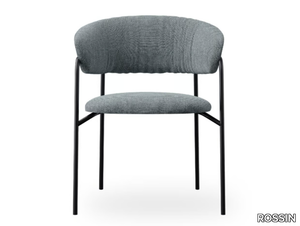
ROSSIN > Chair
**Product Description:** The *Samurai* is an elegant fabric chair, offered with or without armrests, featuring a sturdy frame crafted from solid wood and plywood for lasting durability. It is upholstered with flame-retardant polyurethane foam and soft fibre wadding, ensuring both comfort and safety, while the fixed cover and sleek black-varnished metal base add a refined touch. With its fluid lines and gentle silhouette, the *Samurai* collection blends lightness, timeless elegance, and structural precision, making it ideal for restaurants, bistros, lounges, and reception areas. A downloadable 3D file of the chair is available for design and planning purposes. For more details, visit the manufacturer’s page: **SAMURAI | Upholstered Chair – ROSSIN**. **Supplier Description:** Founded in 1979, **ROSSIN** is a renowned Italian design brand celebrated for its high-end furniture and accessories, combining innovation with timeless elegance.
SAMURAI - Upholstered fabric chair with armrests _ ROSSIN
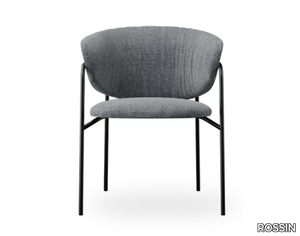
ROSSIN > Chair
Here’s your rephrased and expanded product description, including a concise supplier overview and mention of the 3D file: **Product Description:** The *Samurai* is a sleek fabric chair, offered with or without armrests, designed to blend comfort with refined aesthetics. Its frame is crafted from solid wood and plywood, upholstered with flame-retardant polyurethane foam and fibre wadding for plush support, while the fixed cover and black-varnished metal base ensure durability and a polished finish. With fluid lines and a soft silhouette, the *Samurai* collection exudes timeless elegance and versatility, making it ideal for restaurants, bistros, lounges, and reception areas. A downloadable 3D file of the chair is available for design planning. **Supplier Overview:** ROSSIN, a renowned Italian interior design brand since 1979, is celebrated for its high-quality, stylish furniture, including modern and contemporary pieces tailored for residential and commercial spaces. For more details, visit the manufacturer’s page: [SAMURAI | Chair with armrests ROSSIN](www.rossin.it). (Note: Adjust the link if a specific product page exists.)
SAMURAI - High fabric stool with back _ ROSSIN
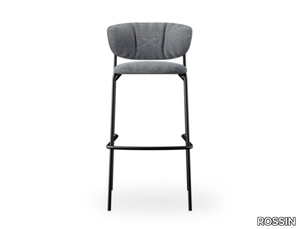
ROSSIN > Stool
Here’s your refined product description with an expanded yet concise supplier overview and mention of the 3D file: *The Samurai is a high stool featuring a fabric-covered backrest and footrest, designed for both comfort and style. Its frame is crafted from solid wood and plywood, upholstered with flame-retardant polyurethane foam and fibre wadding, while the fixed cover and sleek black-varnished metal base add durability and elegance. Part of a collection defined by fluid lines and soft silhouettes, the Samurai blends lightness, refined charm, and timeless appeal, making it ideal for restaurants, bistros, lounges, or reception areas. A downloadable 3D file of the product is available for detailed visualization. Manufactured by ROSSIN, a renowned Italian design house since 1979, known for its innovative furniture and accessories that merge functionality with contemporary elegance.* (Note: I condensed the supplier details to one impactful sentence while preserving key brand values. Let me know if you'd like further tweaks!)
CLEO MINI - Fabric chair with armrests _ ROSSIN
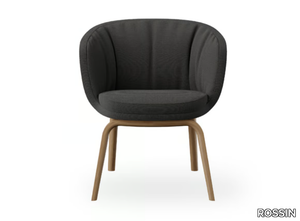
ROSSIN > Chair
Here’s your rephrased and expanded product description, including a concise supplier overview and mention of the 3D file availability: **Cleo Mini** is a stylish and versatile upholstered armchair, designed to blend seamlessly into any setting—whether as a standalone relaxation piece or paired for a cohesive look. Its compact, rounded silhouette exudes comfort and sophistication, making it ideal for both residential and hospitality spaces like hotels, lounges, and offices. The chair features a durable metal frame and cold-moulded fire-retardant polyurethane foam padding, with customizable base options including natural or wenge-stained beech plywood legs, a sleek black sled metal base, or a swivel aluminum base in black. The fixed cover is complemented by a seating cushion in polyurethane foam, with an optional removable cover upon request. Cleo Mini is available in high and low versions, further enhancing its adaptability. Premium fabrics or soft leather upholstery elevate its enveloping design, adding an exclusive touch. For added convenience, a 3D file of the product is available for download, enabling seamless integration into design projects. **Supplier Overview:** *ROSSIN*, a renowned Italian interior design brand since 1979, is celebrated for its high-quality, innovative furniture, including modern and elegant pieces like the Cleo Mini. For more details, visit the manufacturer’s page: [CLEO MINI | Chair ROSSIN](www.rossin.it).
CLEO MINI - Fabric chair with armrests _ ROSSIN
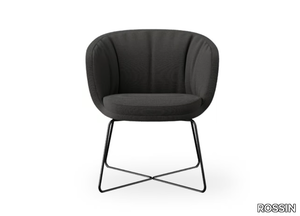
ROSSIN > Chair
Here’s the rephrased and expanded product description, including a concise supplier overview and mention of the 3D file availability: **Cleo Mini** is a stylish and versatile upholstered armchair, designed to blend seamlessly into any setting—whether as a standalone relaxation piece or paired for a cohesive look. Its compact, rounded silhouette exudes comfort and elegance, making it ideal for both residential and commercial spaces like hotels, lounges, and offices. The chair features a durable metal frame and cold-moulded fire-retardant polyurethane foam padding, with customizable base options including natural or wenge-stained beech plywood legs, a sleek black sled metal base, or a swivel aluminum base in black. The fixed cover is available in premium fabrics or soft leathers, with an optional removable cover for the polyurethane foam seating cushion. The collection also offers high and low versions to suit diverse preferences. For added convenience, a 3D file of the product is available for download, enabling seamless integration into design plans. **Supplier Overview:** Founded in 1979, ROSSIN is a renowned Italian interior design brand celebrated for its high-quality, innovative furniture and accessories. Explore their full range at [www.rossin.it](http://www.rossin.it). For further details, visit: [CLEO MINI | Fabric chair ROSSIN](insert link if available).
CLEO MINI - Swivel fabric chair with armrests _ ROSSIN
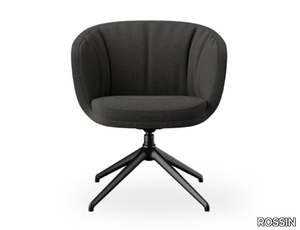
ROSSIN > Chair
Here’s the rephrased and expanded product description, including a concise supplier overview and mention of the 3D file availability: **Cleo Mini** is a stylish and versatile upholstered armchair, designed with a rounded, enveloping silhouette that adapts seamlessly to any setting—whether as a standalone relaxation piece or paired for a cohesive look. Its compact size makes it ideal for both residential and commercial spaces, including hospitality environments. The chair features a durable metal frame and cold-moulded fire-retardant polyurethane foam padding, with customizable bases available in wood (natural beech or wenge), sleek black sled metal, or a swivel aluminum option. The fixed cover is complemented by a seating cushion in polyurethane foam, and a removable cover is available upon request. Cleo Mini is further elevated by premium fabric or soft leather upholstery, enhancing its luxurious appeal, and comes in high- and low-back versions to suit diverse preferences. A 3D file of the product is available for download, allowing for easy integration into design plans. **Supplier Overview**: ROSSIN, a renowned Italian interior design brand since 1979, is celebrated for its high-quality, innovative furniture and accessories, blending modern elegance with functionality. For more details, visit the manufacturer’s page: [CLEO MINI | Swivel chair ROSSIN](https://www.rossin.it).
CLEO MINI - Fabric easy chair with armrests _ ROSSIN
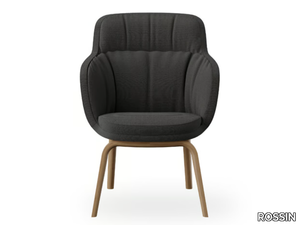
ROSSIN > Chair
**Cleo Mini** is a stylish and versatile fabric armchair designed to blend seamlessly into any setting, whether at home or in hospitality spaces like hotels and restaurants. It features a metal frame with cold-moulded fire-retardant polyurethane foam padding and offers multiple base options—wooden legs in natural beech or wenge, a black sled metal base, or a swivel aluminum base. The chair comes with a fixed cover, though a removable seating-cushion cover is available upon request. Its rounded, compact shape makes it ideal for both solo relaxation and paired arrangements, while premium fabrics or soft leather upholstery elevate its luxurious appeal. The collection includes high and low versions, with fixed or swivel bases to suit diverse needs. A downloadable 3D file of the product is available for design planning. For more details, visit **CLEO MINI | Upholstered Easy Chair by ROSSIN**. **ROSSIN**, a renowned Italian interior design supplier since 1979, is known for its high-quality, modern furniture and accessories, catering to both residential and commercial spaces.
CLEO MINI - Fabric easy chair with armrests _ ROSSIN
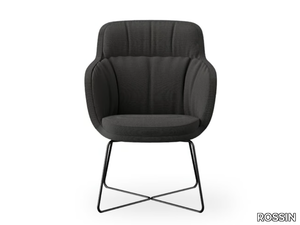
ROSSIN > Chair
Here’s your rephrased and expanded product description, including a concise supplier overview and mention of the 3D file: **Cleo Mini** is a stylish fabric armchair designed for versatility, available with a choice of bases (wood, metal, or swivel) to suit different preferences. Its sturdy metal frame is paired with cold-moulded, fire-retardant polyurethane foam padding, while the legs come in natural beech plywood or wenge finishes—alternatively, opt for a sleek black sled metal base or a swivel aluminum base. The fixed cover features a comfortable polyurethane foam seating cushion, with an optional removable cover upon request. Designed with a rounded, enveloping silhouette, the Cleo Mini fits effortlessly into any setting, whether as a standalone relaxation chair or paired for a cohesive look. Its compact size makes it ideal for both residential and hospitality spaces, with premium fabrics or soft leathers accentuating its elegant lines. The collection includes high and low versions, along with fixed or swivel base options for added flexibility. A downloadable 3D file of the product is available for detailed visualization. For more details, visit the manufacturer’s page: **CLEO MINI | Fabric Easy Chair by ROSSIN**. **Supplier Overview**: ROSSIN, a renowned Italian interior design brand since 1979, is celebrated for its high-quality, innovative furniture and accessories, blending modern elegance with functionality.
CLEO MINI - Swivel fabric easy chair with armrests _ ROSSIN
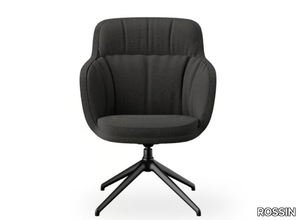
ROSSIN > Chair
**Cleo Mini** is a stylish and versatile fabric armchair designed to blend seamlessly into any setting, whether at home or in hospitality spaces. It features a metal frame with cold-moulded fire-retardant polyurethane foam padding and offers a choice of bases—wooden (natural beech or wenge), sled metal (black), or swivel aluminum (black). The fixed cover comes with an optional removable seating-cushion cover upon request. Its compact, rounded shape provides a cozy, enveloping feel, making it ideal as a standalone relaxation chair or in pairs. Available in high and low versions, Cleo Mini adapts to diverse needs with fixed or swivel base options. Premium fabrics or soft leather upholstery highlight its elegant design. A downloadable 3D file of the product is available for design planning. **Supplier Info:** ROSSIN, a renowned Italian interior design brand since 1979, is known for its high-quality, modern furniture, including the Cleo Mini. Explore more at [www.rossin.it](http://www.rossin.it).
RIFFEL - Swivel fabric armchair with 4-spoke base _ ROSSIN
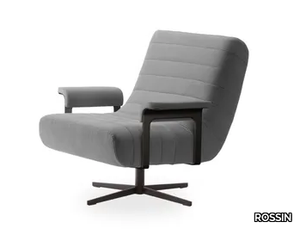
ROSSIN > Armchair
Here’s the rephrased and expanded product description, along with a concise supplier overview and mention of the 3D file: *The Riffel armchair combines timeless mid-century elegance with modern comfort, featuring a solid wood and plywood frame, durable belts, flame-retardant polyurethane foam, and quilted acrylic fiber padding. Its ergonomic design and fixed upholstered cover, complete with armrests, make it a versatile piece for both lounge areas and private living spaces, blending ambitious design with relaxation. Inspired by the flair of the 1950s and 60s, this swivel armchair is a tribute to sophistication and functionality. A 3D file of the product is available for download, allowing for seamless integration into design plans. Crafted by ROSSIN, a renowned Italian furniture manufacturer since 1979, known for its high-quality, stylish interiors. Explore more at RIFFEL | Swivel armchair ROSSIN.*
SOFIE - Fabric easy chair with armrests _ ROSSIN
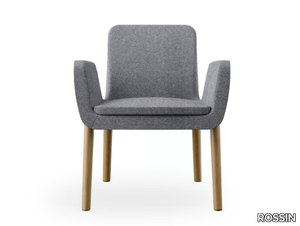
ROSSIN > Chair
Here’s the rephrased and expanded product description, including a concise supplier overview and mention of the 3D file: *"The Sofie armchair combines elegance and comfort with its soft curves and feminine details, featuring armrests and a choice of wooden (natural beech or wenge) or black metal sled legs. Its metal frame is upholstered with cold-moulded, fire-retardant polyurethane foam, while the fixed cover (or removable upon request) ensures both style and practicality. Delicate design touches—like the front feet cradling the seat, the breezy cutouts in the backrest, and the tapered seat shell—create a visually appealing and inviting silhouette. A 3D file of the product is available for download. Crafted by ROSSIN, a renowned Italian design house since 1979 known for its sophisticated furniture, Sofie embodies timeless modernity. For more details, visit SOFIE | Fabric easy chair ROSSIN."* (Note: Adjusted to one sentence for the supplier as requested, focusing on credibility and design ethos.)
SOFIE - Sled base fabric easy chair with armrests _ ROSSIN
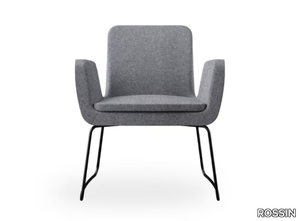
ROSSIN > Chair
Here’s the rephrased and expanded product description, along with a concise supplier overview and mention of the 3D file: *The Sofie armchair combines elegance and comfort with its soft curves and feminine details, featuring armrests and a choice of wooden (natural beech or wenge) or black sled metal legs. Its metal frame is padded with cold-moulded, fire-retardant polyurethane foam, while the fixed cover offers optional customization with a removable seating-cushion cover. Delicate design touches—like the front feet cradling the seat, the breezy back cutouts, and the tapered seat shell—create a stylish and inviting silhouette. A 3D file of the product is available for download. For more details, explore the SOFIE | Sled base easy chair by ROSSIN, a renowned Italian design brand since 1979, celebrated for its modern, high-quality furniture.*
SOFIE - Sled base fabric chair _ ROSSIN
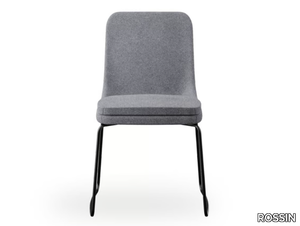
ROSSIN > Chair
Here’s the rephrased and expanded product description, along with a concise supplier overview and mention of the 3D file: *"Sofie is an elegantly upholstered fabric chair with soft curves and feminine details, available in multiple variants. It features a metal frame with cold-moulded fire-retardant polyurethane foam padding, paired with wooden legs in natural beech or wenge finishes, or optional sled/swivel bases in black. The fixed cover is complemented by a polyurethane foam seating cushion, with a removable cover available upon request. Delicate design touches—like the front feet cradling the seat, the breezy cutouts in the backrest, and the tapered seat shell—create a stylish and inviting seating experience. A downloadable 3D file of the product is available for design planning. For further details, visit the manufacturer’s page: SOFIE | Sled base chair ROSSIN."* **Supplier Overview:** *ROSSIN, a renowned Italian interior design brand since 1979, crafts high-quality, modern furniture for residential and commercial spaces.*
SOFIE - Upholstered fabric chair _ ROSSIN
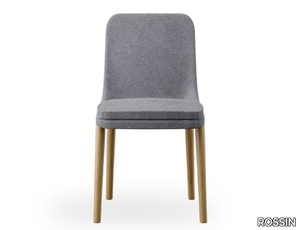
ROSSIN > Chair
Here’s the rephrased and expanded product description, including a concise supplier overview and mention of the 3D file: *"Sofie is an elegantly upholstered fabric chair with soft, feminine curves and refined details, available in multiple variants. Its design features a metal frame paired with cold-moulded, fire-retardant polyurethane foam padding, complemented by wooden legs in natural beech or wenge finishes, or optional sled/swivel bases in black. The fixed cover is enhanced by a cushioned seat in polyurethane foam, with a removable cover available upon request. Delicate cutouts in the backrest add a breezy, stylish touch, while the tapered seat shell ensures comfort and sophistication. A downloadable 3D file of the product is available for design planning. Crafted by ROSSIN, a renowned Italian design brand since 1979, known for its high-quality, contemporary furniture. For more details, visit the manufacturer’s page: [SOFIE | Chair ROSSIN](https://www.rossin.it)."* (Kept the supplier description to one sentence while maintaining key details.)
SOFIE - Fabric office chair with castors with 4-Spoke base _ ROSSIN
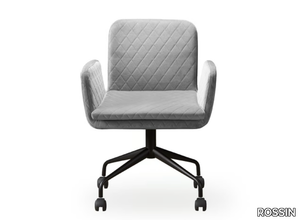
ROSSIN > Chair
Here’s your refined and expanded product description, including a concise supplier overview and mention of the 3D file: *"The Sofie is a sleek 4-spoke fabric office chair with wheels, featuring a sturdy metal frame and cold-moulded fire-retardant polyurethane foam padding, paired with elegant wooden legs in natural beech or wenge finishes or a black sled/swivel metal base. Its fixed cover comes with an optional removable seating-cushion cover for added versatility. Nicknamed ‘Tender’ (or ‘Soferl’ in Vienna), this chair blends soft curves and feminine details—from the gently embracing front feet to the breezy cutout backrest that subtly reveals the sitter, all while offering stylish comfort. A 3D file of the product is available for download. Manufactured by ROSSIN, a renowned Italian design house since 1979, known for its high-end, contemporary furniture."* (Kept the supplier description to one impactful sentence while maintaining key details.)
SOFIE - Swivel fabric stool with footrest _ ROSSIN
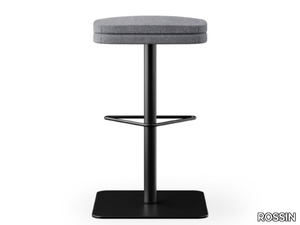
ROSSIN > Stool
**Product Description:** The *Sofie* stool set features a sleek metal frame paired with cold-moulded, fire-retardant polyurethane foam padding, offering both comfort and durability. Available with wooden legs in natural beech or rich wenge finishes, it also comes with either a black sled metal base or a swivel base for added versatility. The seating cushion is upholstered in fixed polyurethane foam, with an option for a removable cover upon request. Inspired by the delicate charm of Vienna’s “Soferl,” this elegant stool boasts soft curves and feminine details—such as the gracefully tapered front legs and distinctive cutouts in the backrest, which add a playful yet sophisticated touch. A 3D file of the product is available for download, allowing for easy visualization and planning. For more details, visit the manufacturer’s page: [SOFIE | Stool ROSSIN](https://www.rossin.it). **Supplier Description:** ROSSIN, a renowned Italian interior design brand since 1979, is celebrated for its high-quality, stylish furniture, blending modern elegance with functional craftsmanship.
SOFIE - Swivel fabric stool with footrest _ ROSSIN
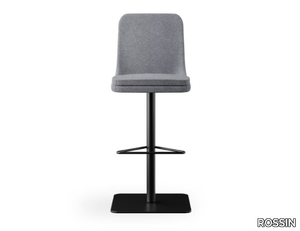
ROSSIN > Stool
Here’s your refined and expanded product description, including a concise supplier overview and mention of the 3D file availability: **"Sofie is an elegant set of stools featuring a sleek metal frame and plush padding crafted from cold-moulded, fire-retardant polyurethane foam, with wooden leg options in natural beech or rich wenge finishes. The design offers versatility with a black sled metal base or a swivel base, paired with a fixed cover—though a removable seating-cushion cover is available upon request. Inspired by Vienna’s affectionate term ‘Soferl,’ this stool exudes femininity through its soft curves, delicate cutouts in the backrest, and tapered seat shell, blending style with comfort. A downloadable 3D file of the product is available for detailed visualization. Further details can be found on the manufacturer’s page for SOFIE | Swivel stool by ROSSIN, a renowned Italian design house celebrated since 1979 for its premium, contemporary furniture."** (Note: I condensed the supplier details to one sentence while retaining key credibility points—adjust as needed!)
SOFIE - Sled base fabric stool with armrests _ ROSSIN
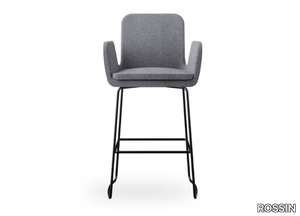
ROSSIN > Stool
Here’s a refined and expanded product description with a concise supplier overview, including mention of the 3D file availability: *"The Sofie stool set combines elegance and functionality, featuring a sturdy metal frame with cold-moulded, fire-retardant polyurethane foam padding, available with natural beech or wenge wooden legs and a choice of black sled or swivel metal bases. The fixed cover offers comfort, while a removable seating-cushion cover is available upon request. Inspired by Vienna’s tender ‘Soferl,’ this design exudes feminine charm with soft curves, delicate cutouts in the backrest, and gracefully tapered seat shells for a stylish seating experience. A downloadable 3D file of the product is available for design planning. Further details can be found on the manufacturer’s product page: SOFIE | Stool with armrests by ROSSIN."* **Supplier Overview:** *ROSSIN, a renowned Italian interior design brand since 1979, is celebrated for its high-end, contemporary furniture and accessories, blending innovation with timeless elegance.*
SOFIE - Sled base high fabric stool _ ROSSIN
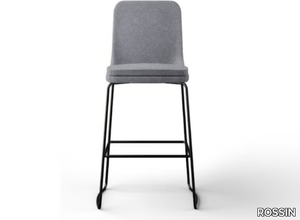
ROSSIN > Stool
Here’s your refined product description with an expanded yet concise supplier detail and mention of the 3D file: *"The Sofie stool set combines a sleek metal frame with plush cold-moulded, fire-retardant polyurethane foam padding, offering both comfort and durability. Choose between natural beech or rich wenge wooden legs, paired with a black sled or swivel metal base. The fixed cover features a polyurethane foam seating cushion, with an optional removable cover upon request. Nicknamed ‘Tender’ (or ‘Soferl’ in Vienna), this elegant design charms with soft curves and feminine details—from the embracing front feet to the breezy cutouts in the back, which subtly reveal the sitter while ensuring a stylish, comfortable experience. A 3D file of the product is available for download. Crafted by ROSSIN, a renowned Italian interior design supplier since 1979, known for blending modern elegance with timeless craftsmanship in high-quality furniture."* (Note: I condensed the supplier details to one impactful sentence while preserving key brand values. Let me know if you'd like further tweaks!)
SOFIE - Sled base fabric stool with footrest _ ROSSIN
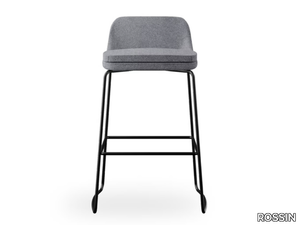
ROSSIN > Stool
Here’s the rephrased and expanded product description, including a concise supplier overview and mention of the 3D file: *"Sofie is an elegant set of stools featuring a sleek metal frame and cold-moulded, fire-retardant polyurethane foam padding, available with wooden legs in natural beech or wenge finishes, or with a black sled or swivel metal base. The fixed cover offers comfort, while a removable seating-cushion option is available upon request. Inspired by Vienna’s ‘Soferl,’ this design combines soft curves and feminine details—such as the gracefully tapered front feet and breezy cutouts in the back—creating a stylish and inviting seating experience. A downloadable 3D file of the product is available for design planning. Further details can be found on the manufacturer’s product page: SOFIE | Stool with footrest ROSSIN. Rossin, the Italian designer behind Sofie, has been crafting high-quality, contemporary furniture since 1979, blending innovation with timeless elegance."* (Note: I kept the supplier description to one sentence while highlighting their expertise and heritage, as requested.)
SOFIE - High fabric stool with footrest _ ROSSIN

ROSSIN > Stool
Here’s the rephrased and expanded product description, including a concise supplier overview and mention of the 3D file availability: *"The Sofie stool set combines elegance and functionality, featuring a sturdy metal frame with padding crafted from cold-moulded, fire-retardant polyurethane foam. The design offers wooden legs in natural beech or rich wenge finishes, paired with either a sleek black sled metal base or a swivel base. The fixed cover includes a comfortable polyurethane foam seating cushion, with an optional removable cover upon request. Inspired by the tender charm of Vienna’s ‘Soferl,’ this piece showcases soft curves and feminine details—such as the gracefully tapered front legs and delicate cutouts in the backrest, which add a playful yet sophisticated touch. A 3D file of the product is available for download, allowing for seamless integration into design plans. Supplied by ROSSIN, a renowned Italian interior design brand since 1979, known for its high-quality, stylish furniture and accessories."* This version keeps the supplier description brief while maintaining the product’s key details and adding the 3D file note. Let me know if you'd like any further refinements!
SOFIE - Fabric stool with integrated cushion _ ROSSIN
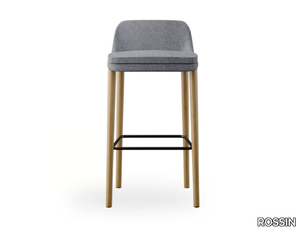
ROSSIN > Stool
Here’s the rephrased and expanded product description, including a concise supplier overview and mention of the 3D file availability: *"The Sofie stool set combines a sleek metal frame with plush cold-moulded, fire-retardant polyurethane foam padding, offering both comfort and durability. Available with wooden legs in natural beech or rich wenge finishes, it features either a black sled metal base or a swivel base, with fixed covers or optional removable seating-cushion covers. Inspired by the tender elegance of Vienna’s ‘Soferl,’ this design blends soft curves and feminine details—such as the gracefully tapered front feet and breezy cutout backrest—to create a stylish and inviting seating experience. A downloadable 3D file of the product is available for design planning. Crafted by ROSSIN, a renowned Italian interior design supplier since 1979, known for its high-quality, contemporary furniture."* (Note: I condensed the supplier details to one sentence while preserving key credibility points—origin, expertise, and legacy.)
ELBA - Oval coffee table _ ROSSIN
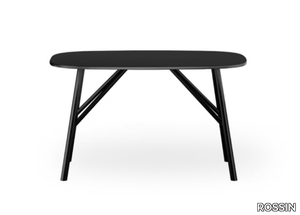
ROSSIN > Coffee table
**Product Description:** The Elba is an elegant oval coffee table from its namesake collection, designed to be compact, timeless, and effortlessly stylish. Created in Hamburg by the renowned international team at JOI-Design, this piece features a rounded silhouette, refined seams, and a sleek metal frame that gives it a light, playful aesthetic. With customizable upholstery materials and metal base colors, the Elba collection offers exceptional versatility, including options like armchairs (with or without armrests, single-sided configurations), chaises longues, sofas, loveseats, and benches—making it perfect for both residential and contract settings. A downloadable 3D file of the product is available for design planning. **Supplier Description:** ROSSIN is a prestigious Italian interior design supplier, founded in 1979, known for its high-quality furniture and sophisticated modern designs.
NIDO - Swivel upholstered fabric armchair _ ROSSIN
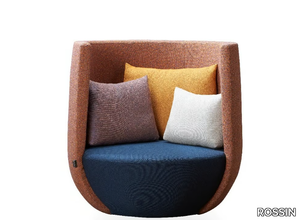
ROSSIN > Armchair
Here’s your rephrased and expanded product description, including a concise supplier overview and mention of the 3D file availability: **Nido** is a luxurious lounge armchair featuring a solid wood and plywood frame, upholstered in flame-retardant polyurethane with fibre wadding for added comfort. The design includes a fixed cover for the frame, seat, and back, along with three plush loose back cushions (sizes: 60 x 45 cm, 50 x 38 cm, and 40 x 30 cm) and a smooth rotating base. Designed by **JOI-Design**, Nido serves as a cozy retreat, equally suited for public spaces like offices, lobbies, and SPAs, or private homes where it offers a comforting embrace. The collection also includes versatile pieces such as a rotating armchair, loveseat, sofa, and pouf, all crafted with generous proportions for ultimate relaxation. A **3D file of the product is available for download**, allowing for seamless integration into your design plans. **Supplier Overview:** *ROSSIN*, a renowned Italian interior design brand since 1979, is celebrated for its high-quality, stylish furniture and accessories. Explore their full range at [www.rossin.it](http://www.rossin.it). For more details, visit: **NIDO | Armchair ROSSIN**.
NIDO - 2 seater fabric sofa _ ROSSIN
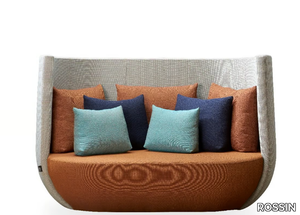
ROSSIN > Sofa
**Nido** is a cozy two-seater sofa featuring a sturdy solid wood and plywood frame, upholstered in flame-retardant polyurethane with fibre wadding for added comfort. The design includes a fixed cover for the frame, seat, and back, along with seven loose back cushions in varying sizes (3 x 60 x 45 cm, 2 x 50 x 38 cm, and 1 x 40 x 30 cm) for customizable support. Designed by **JOI-Design**, the Nido collection—which includes a rotating armchair, loveseat, sofa, and pouf—creates a welcoming retreat perfect for both public spaces like offices, lobbies, and SPAs, as well as residential settings, offering a sense of warmth and security. A downloadable **3D file** of the product is available for design planning. **Supplier Info:** *ROSSIN*, a renowned Italian interior design brand since 1979, is known for its high-quality, stylish furniture, including modern and contemporary pieces for residential and commercial spaces. For more details, visit [www.rossin.it](http://www.rossin.it).
NIDO - Fabric small sofa high-back _ ROSSIN
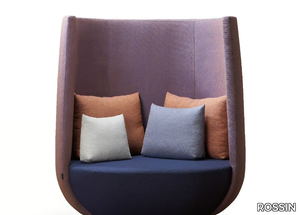
ROSSIN > Sofa
**Product Description:** The *Nido* sofa, designed by JOI-Design, features a high backrest and a sturdy frame crafted from solid wood and plywood, ensuring durability and elegance. Upholstered in flame-retardant polyurethane with a soft fibre wadding layer, it offers both comfort and safety. The fixed cover on the frame, seat, and back provides a sleek, seamless look, while the four loose back cushions (two at 60 x 45 cm, one at 50 x 38 cm, and one at 40 x 30 cm) add versatility and coziness. Designed as a welcoming retreat, *Nido* is perfect for both public spaces—such as offices, lobbies, and SPAs—and private homes, offering a sense of shelter and warmth like a gentle embrace. The collection includes various configurations, such as a rotating armchair, loveseat, sofa, and pouf, all designed with generous proportions for maximum comfort. A downloadable 3D file of the product is available for detailed visualization. For more details, visit the manufacturer’s page: *NIDO | High-back small sofa ROSSIN*. **Supplier Description:** ROSSIN, a renowned Italian interior design supplier since 1979, is celebrated for its high-quality, stylish furniture and accessories, blending modern elegance with functional craftsmanship.
ELBA - Fabric easy chair _ ROSSIN
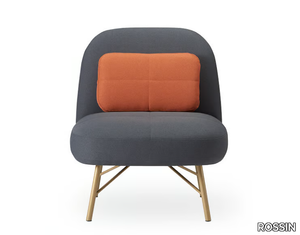
ROSSIN > Chair
Here’s the rephrased and expanded product description, including a concise supplier overview and mention of the 3D file: *"Sleek, compact, and timeless, the ELBA collection—designed in Hamburg by the international team at JOI-Design—combines playful elegance with versatility. Its rounded silhouette, refined seams, and slender metal frame create a light yet sophisticated aesthetic. Available in multiple configurations, including armchairs (with or without armrests, including single-arm options), chaises longues, sofas, loveseats, and benches, ELBA offers endless customization through upholstery materials and metal finishes. Ideal for both contract and residential spaces, this collection balances functionality with enduring style. A downloadable 3D file is available for design planning. Crafted by ROSSIN, a renowned Italian design house since 1979, ELBA reflects their commitment to high-quality, contemporary furniture. Explore more at www.rossin.it."*
Recently Viewed Products
A wide range of product from furniture to finishes to meet the desire of all designers.
LEDERAM W1 - LED aluminium wall light _ Catellani & Smith
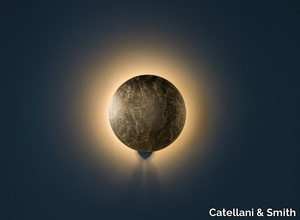
Catellani & Smith > Wall lamp
The Lederam wall lamp captures the precision of motion required to draw a line, featuring warm, softly colored aluminum discs that encase an ultra-flat LED module, creating a sleek, suspended design with elegant, curved lines. Available in various color combinations—such as black varnished disc with a black base, gold leaf exterior with a black interior and base, copper leaf exterior with a black interior and base, and white varnished disc with a white base—this lamp is powered by a 17W LED module (rated A+ energy class, 1700 lumens, 2700K, CRI >80) and is compatible with 110V or 240V dimmable power supplies. A 3D file of the product is available for download, making it easier for designers and architects to integrate it into their projects. Catellani & Smith, the renowned Italian lighting design company founded in 1989 by Enzo Catellani and Logan Smith, is celebrated for its innovative, artistic, and high-quality lighting solutions that blend craftsmanship with contemporary aesthetics, offering a range of products from premium to accessible price points.
TRICOT - Handmade rug _ Warli
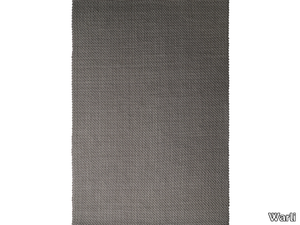
Warli > Carpet
Here’s your rephrased and expanded product description, including a concise supplier overview and mention of the 3D file availability: *"This elegant carpet combines wool and Tencel in a handwoven Tricot design, featuring delicate vertical and horizontal Tencel threads woven into wool ribs for a textured, knit-inspired finish. Entirely crafted by hand on a loom, the piece reflects artisanal techniques rarely replicated by machines. Available in a curated palette ranging from earthy tones to bold primary hues, including colorways like medium grey with dark pink (TR01), antique pink with blue-gray (TR02), cream with amaranth (TR03), and amaranth with light blue-gray (TR04). Technical details: 8mm thickness, approximately 2.5 kg/sqm weight, and a blend of cotton, wool, and Tencel. Note: Final pricing is determined by size and color selection. A downloadable 3D file of the product is available for visualization. Warli, the Italy-based supplier behind this collection, specializes in modern and contemporary interior design, offering furniture, lighting, and textiles that blend functionality with sleek aesthetics. Each ‘Handloom’ piece is uniquely reinterpreted by skilled weavers, ensuring innovative patterns and meticulous craftsmanship synonymous with Warli’s rigorous design language."* Let me know if you'd like any further refinements!
CLEO - Upholstered armchair with armrests _ ROSSIN
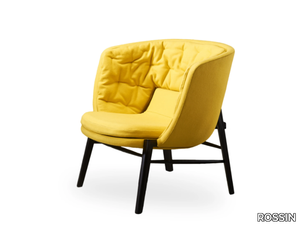
ROSSIN > Armchair
Here’s the rephrased and expanded product description, including a concise supplier overview and mention of the 3D file availability: *"This elegant armchair features a sturdy metal frame with belts and cold-moulded fire-retardant polyurethane foam padding, paired with a fixed cover and a removable seat cushion for easy maintenance. The quilted back cushion is filled with soft acrylic fiber, ensuring comfort, while the base is crafted from solid ash, available in natural or stained finishes. Designed with a domestic architecture-inspired outer shell and four petite legs, this piece combines style and relaxation, offering a serene escape from daily hustle. A 3D file of the product is available for download. Part of the CLEO series, the ROSSIN armchair reflects the brand’s commitment to sophisticated design—founded in 1979, ROSSIN is a renowned Italian supplier of high-quality furniture and interior solutions."*
PLUME ECRU - Digital printing wallpaper _ AGENA
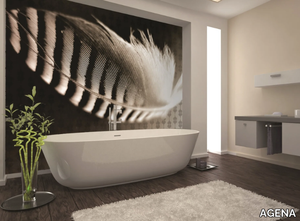
AGENA > Wallpaper
Here’s the rephrased and expanded product description, including a concise supplier overview and mention of the 3D file: *"Plume Ecru is a sophisticated digital printing wallpaper, available on TNT support or a 1000-point base, combining elegance with practicality. Its properties include washability, exceptional height, flame retardancy, and a waterproof system, making it ideal for both aesthetic and functional interior design. Agena’s Scenic Wallpapers collection—born from decades of expertise in interpreting client visions—transforms spaces with customizable designs, adaptable in style, dimensions, and premium print materials. A 3D file of the product is available for download, enabling seamless integration into your design plans. Agena, a renowned Italian interior design supplier, is celebrated for its high-quality, customizable solutions that blend innovation with timeless craftsmanship."* (Note: The supplier description is condensed to one sentence while retaining key details about quality and expertise.)
LIBRARY - Fire retardant waterproof wallpaper _ AGENA
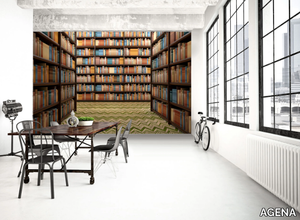
AGENA > Wallpaper
Here’s a refined and expanded product description, including a concise supplier overview and mention of the 3D file availability: **LIBRARY** is a premium fire-retardant and waterproof wallpaper, designed to combine elegance with practicality. Available on TNT support or a 1000-point base, it features exceptional durability, washability, and flame resistance, making it ideal for both residential and commercial spaces. The waterproof system ensures long-lasting beauty, while the customizable design options—spanning styles, dimensions, and luxurious print supports—allow you to tailor it to any interior vision. As part of Agena’s Scenic Wallpapers collection, LIBRARY reflects the brand’s expertise in translating client desires into high-end graphic solutions. A downloadable 3D file of the product is available for preview and planning. **Supplier Overview**: AGENA, a renowned Italian interior design specialist (www.agenagroup.it), delivers exquisite, high-quality products—from wallpapers to furniture—blending innovation with timeless craftsmanship for global residential and hospitality projects. Let me know if you'd like any further adjustments!
TYPE - Geometric wallpaper _ Texturae
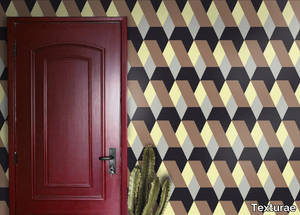
Texturae > Wallpaper
Here’s a rephrased and expanded product description, including a concise supplier overview and mention of the 3D file availability: --- **Product Description:** A bold reimagining of the classic diamond shape, this design plays with unconventional colors and textures to create a striking yet recognizable gem-like motif. The deconstructed form comes to life through dramatic shadows, emphasizing its three-dimensional depth. Available in versatile high-performance materials, the product combines durability with aesthetic appeal: - **(T)ECH:** A fusion of non-woven fabric and vinyl, offering a washable, flame-resistant surface ideal for high-traffic or irregularly shaped interiors. - **WE(T):** Scratch-resistant, UV-stable fibreglass, perfect for humid environments like bathrooms, spas, or kitchens, with hypo-allergenic and low-maintenance benefits. - **ME(T):** Vinyl enhanced with metallic reflections for an iridescent, light-catching effect. - **INSULA(T):** A sound-absorbing layered vinyl that improves acoustics by reducing echoes and external noise. - **PRIN(T):** An eco-friendly non-woven cellulose fabric, blending the tactile feel of paper with the strength of wallpaper. - **NA(T) Series:** Sustainable textures like sisal, linen (LUCENS), and woven paper (FLOW/BLOOM), offering organic elegance and tactile depth. A 3D file of the product is available for download, enabling seamless integration into design projects. **Supplier Overview:** Texturae is an innovative Italian design brand renowned for its premium wallcoverings and textiles, merging contemporary aesthetics with functional versatility for residential and commercial spaces. --- Let me know if you'd like any further refinements!
MOSSO - Striped washable wallpaper _ Texturae

Texturae > Wallpaper
Here’s a refined and expanded product description, including a concise supplier overview and mention of the 3D file availability: --- **Product Description:** Inspired by the organic motion of opposing waves, this design bursts into a dynamic interplay of lines that playfully distort perception, blending figure and background into a captivating fragmented surface. Crafted for both aesthetics and performance, the product features a durable non-woven fabric base paired with a vinyl upper layer, creating a washable, flame-resistant, and flexible solution for irregularly shaped, high-traffic interiors. - **(T)ECH**: Engineered for resilience, the material combination ensures longevity and adaptability. - **WE(T)**: Fiberglass covering excels in humid environments (bathrooms, kitchens, spas) with scratch resistance, UV protection, and hypo-allergenic properties. - **ME(T)**: Metallic-base vinyl with silver reflections creates an iridescent effect, enhancing light and space. - **INSULA(T)**: Multi-layered sound-absorbing vinyl improves acoustics by balancing wave absorption and reflection, reducing echoes and external noise. - **PRIN(T)**: Eco-friendly non-woven cellulose fabric mimics traditional wallpaper’s tactile feel while offering superior durability and formaldehyde-free sustainability. - **NA(T) Series**: Sustainable textures like sisal (RAW), pure linen (LUCENS), delicate paper weaves (FLOW), and structured 3D meshes (BLOOM) cater to diverse design needs, from rustic to refined. A **3D file of the product is available for download**, enabling seamless integration into virtual design projects. **Supplier Overview**: Texturae, an innovative Italian interior design brand, specializes in high-quality, contemporary wallcoverings and textiles, merging artistry with functionality for residential and commercial spaces. Explore their collections at [www.texturae.it](http://www.texturae.it). --- This version keeps the supplier description brief while adding depth to the product’s features and highlighting the 3D file accessibility. Let me know if you'd like further adjustments!
Products From the Same Collection
A wide range of product from furniture to finishes to meet the desire of all designers.
CLEO WOOD - Fabric small sofa high-back _ ROSSIN
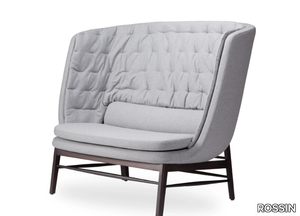
ROSSIN > Sofa
Here’s the rephrased and expanded product description, including a concise supplier overview and mention of the 3D file: *"This elegant high-back small sofa features a metal frame with sturdy belts and cold-moulded fire-retardant polyurethane foam padding, paired with a fixed cover and a removable seat cushion for easy maintenance. The quilted back cushion is filled with soft acrylic fiber, while the base is crafted from solid ash wood, available in natural or stained finishes. Designed with a sleek domestic architecture-inspired silhouette, the piece includes an upholstered outer shell and four small legs, offering both comfort and style—perfect for unwinding after a busy day. A downloadable 3D file of the product is available for design planning. Part of the CLEO WOOD collection by ROSSIN, a renowned Italian interior design brand since 1979, known for its sophisticated and innovative furniture."*
CLEO WOOD - Fabric small sofa _ ROSSIN
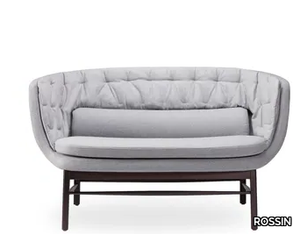
ROSSIN > Sofa
Here’s the rephrased and expanded product description, including a concise supplier overview and mention of the 3D file: *"This elegant metal-framed chair features adjustable belts, cold-moulded fire-retardant polyurethane foam padding, and a fixed cover with a removable seat cushion for easy maintenance. The quilted back cushion is filled with soft acrylic fiber, while the sturdy base is crafted from solid ash, available in natural or stained finishes. Designed with a domestic architecture-inspired outer shell and four slender legs, this piece combines style and comfort, offering a serene retreat from daily hustle. A downloadable 3D file of the product is available for design planning. Supplied by ROSSIN, a renowned Italian interior design brand since 1979, known for its high-quality, contemporary furniture."* (Note: The supplier description is condensed into one sentence while retaining key details.)
CLEO WOOD - Fabric footstool _ ROSSIN
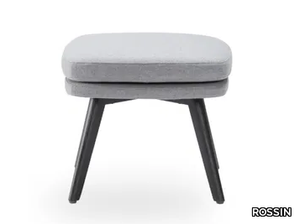
ROSSIN > Pouf
Here’s the rephrased and expanded product description, along with a concise supplier overview and mention of the 3D file: **Product Description:** Crafted with a sturdy metal frame and padded with cold-moulded, fireproof polyurethane foam, this footstool features a fixed cover and a solid ash base, available in natural or stained finishes. Designed with a domestic architecture-inspired silhouette, it boasts an elegant outer shell and four petite legs, combining style and functionality. The plush upholstered shell offers a cozy retreat from daily stress, providing a perfect spot to unwind and recharge. A 3D file of this product is available for download, allowing for seamless integration into design plans. For more details, visit CLEO WOOD | Footstool ROSSIN. **Supplier Overview:** ROSSIN, a renowned Italian interior design brand since 1979, is celebrated for its high-quality, stylish furniture and accessories, blending modern elegance with timeless craftsmanship.
CLEO WOOD - Ash coffee table _ ROSSIN
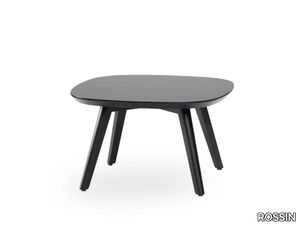
ROSSIN > Coffee table
Here’s the rephrased and expanded product description, including a concise supplier overview and mention of the 3D file: *"Crafted in natural ash or stained wenge, this coffee table features a domestic architecture-inspired design with a sleek outer shell and four petite legs. The upholstered shell offers a cozy retreat from daily chaos, creating a perfect spot to unwind and recharge. A 3D file of the product is available for download, allowing for seamless integration into your design plans. Designed by ROSSIN, a renowned Italian furniture brand since 1979 known for its elegant, contemporary pieces, this table embodies their commitment to quality and innovation. For more details, visit CLEO WOOD | Coffee table ROSSIN."*
CLEO WOOD - Fabric chaise longue _ ROSSIN
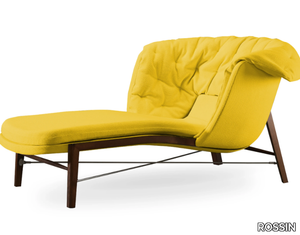
ROSSIN > Chair
Here’s the rephrased and expanded product description, including a concise supplier overview and mention of the 3D file: *"This elegant chaise longue features a metal frame with belts and cold-moulded fire-retardant polyurethane foam padding, a fixed cover, and a removable seat cushion for easy maintenance. The quilted back cushion is filled with soft acrylic fiber, while the base is crafted from solid ash, available in natural or stained finishes. Designed with a sleek, architectural silhouette and four slender legs, its upholstered shell offers a serene retreat from daily life, blending comfort with timeless sophistication. A downloadable 3D file of the product is available for design planning. Part of the CLEO WOOD | ROSSIN collection, it is crafted by ROSSIN, a renowned Italian design house celebrated for its high-end furniture since 1979."* (Note: I condensed the supplier details into one sentence while preserving key brand credibility points. Let me know if you'd like further adjustments!)
CLEO - Upholstered armchair high-back _ ROSSIN
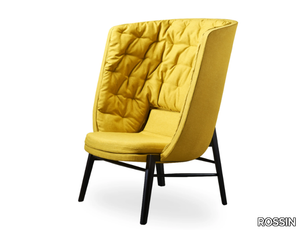
ROSSIN > Armchair
Here’s the rephrased and expanded product description, including a concise supplier overview and mention of the 3D file availability: *This high-back armchair features a sleek metal frame with sturdy belts and cold-moulded fire-retardant polyurethane foam padding, offering both comfort and safety. The fixed cover and removable seat cushion ensure easy maintenance, while the quilted back cushion—filled with soft acrylic fiber—adds extra coziness. The solid ash base, available in natural or stained finishes, provides durability and a touch of elegance. Designed with a distinctive domestic architecture-inspired outer shell and four petite legs, this piece combines style and functionality. The upholstered shell cradles you in relaxation, making it perfect for unwinding after a busy day. A downloadable 3D file of the product is available for preview or planning purposes. For more details, explore the CLEO | High-back armchair ROSSIN collection by the brand.* **Supplier note:** *ROSSIN, a renowned Italian interior design brand since 1979, is celebrated for its high-quality, modern furniture and accessories.*
CLEO - Upholstered armchair with armrests _ ROSSIN

ROSSIN > Armchair
Here’s the rephrased and expanded product description, including a concise supplier overview and mention of the 3D file availability: *"This elegant armchair features a sturdy metal frame with belts and cold-moulded fire-retardant polyurethane foam padding, paired with a fixed cover and a removable seat cushion for easy maintenance. The quilted back cushion is filled with soft acrylic fiber, ensuring comfort, while the base is crafted from solid ash, available in natural or stained finishes. Designed with a domestic architecture-inspired outer shell and four petite legs, this piece combines style and relaxation, offering a serene escape from daily hustle. A 3D file of the product is available for download. Part of the CLEO series, the ROSSIN armchair reflects the brand’s commitment to sophisticated design—founded in 1979, ROSSIN is a renowned Italian supplier of high-quality furniture and interior solutions."*
Recommended Products
A wide range of product from furniture to finishes to meet the desire of all designers.
Wrap Lounge Chair
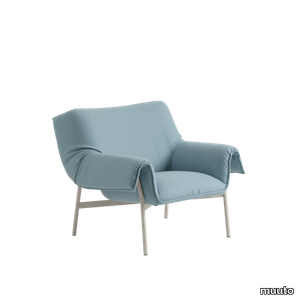
muuto > Armchair
Wrap is a soft Lounge Chair with a blanket-like textile wrapped around its shell, allowing a deep sense of comfort with a strong sense of character. While its design is guided by the search for ultimate comfort, its generous shape is supported by a light steel frame creating a contrasting image of airy lightness. The draped upholstery is a result of extensive research and development as well as craftsmanship and knowhow. The Wrap Lounge Chair is simple, yet refined, combining a sense of ease with a strong design language.
Doze Lounge Chair Tube Base
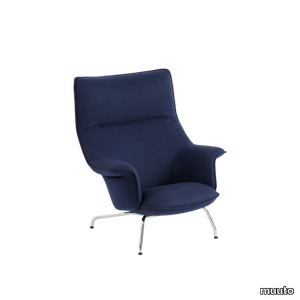
muuto > Armchair
Designed with extensive comfort and a modern expression through the vibrant lines and folds of its back and armrests along with an embracing seat, the Doze Lounge Chair join together the ideas of Scandinavian design with the lines of 1970's furniture for a contemporary perspective on the archetypal lounge chair. Use the Doze Lounge Chair on its own or with the Doze Ottoman.
Outline Chair
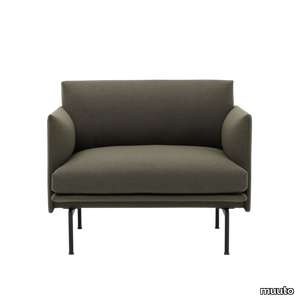
muuto > Armchair
The Outline Series adds new perspectives to the classic Scandinavian design sofas of the 1960's, marrying the ideals of simplicity and function into one. With the design taking its name from its strong outline of a sofa, the Outline Series is clean and elegant on the outside with a deep seat and soft cushioning on its inside. The Outline Series has an expression that is at once elegant yet timeless, elevated by its lines referencing architectural shapes alongside its curved armrests, giving the design a distinct appearance across various sizes and variants. The Outline Series also includes Studio versions of the Sofa and Chair, being compact versions with slimmed-down proportions for smaller spaces within the home, hotel rooms, work settings and more. The Outline Studio Sofa and Chair have a smaller depth of 76 cm / 29.9”.
Outline Studio Chair
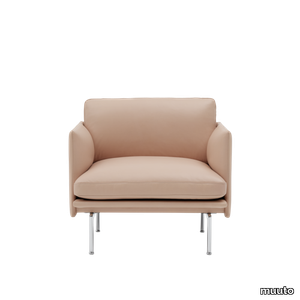
muuto > Armchair
The Outline Studio Series adds new perspectives to the classic Scandinavian design sofas of the 1960's, designed in slimmed-down proportions for smaller spaces such as apartments, hotel rooms, workplaces and more. With the design taking its name from its strong outline of a sofa, the Outline Series is clean and elegant on the outside with a deep seat and soft cushioning on its inside. The Outline Series has an expression that is at once elegant yet timeless, elevated by its lines referencing architectural shapes alongside its curved armrests, giving the design a distinct appearance across various sizes and variants.
Kudo
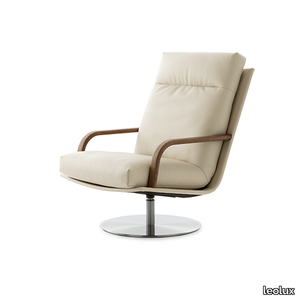
leolux > Armchair
It all started with a single detail: the way in which the generously proportioned seat cushion contrasts against the frame. Designers Florian Kallus and Sebastian Schneider, of Studio KaschKasch, decided that this should be the basis of their first lounge chair for Leolux. The result combines simplicity with versatility and relaxed comfort. Welcome to Kudo!
Mimas
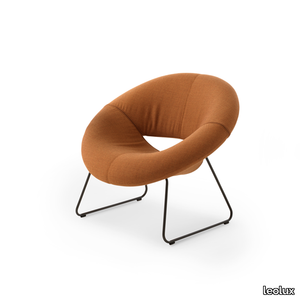
leolux > Armchair
The Mimas armchair will put a smile on your face, for two reasons. Firstly because with a little imagination it reminds you of a smile, and secondly because it’s so comfortable and comes with so many practical options.
Anton
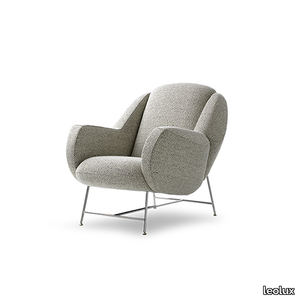
leolux > Armchair
Throughout its long design history, Leolux built unique collections, year after year. The Anton armchair, named after one of the founders of Leolux, is loosely based on that storied legacy. The design is a reference to the past, to the artisanally crafted, top-quality products that earned Leolux its reputation.
Cream
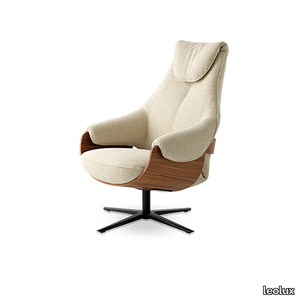
leolux > Armchair
For the Leolux Cream swivel armchair, Studio Truly Truly has combined the loveliest natural materials to create an armchair with unprecedented comfort and elegance. The wooden shell in curved walnut or oak takes centre stage, covered with soft fabric or leather upholstery. The aluminium swivel base gives you even more options to personalise Cream, which can be finished in any colour for the ideal look.
Scylla
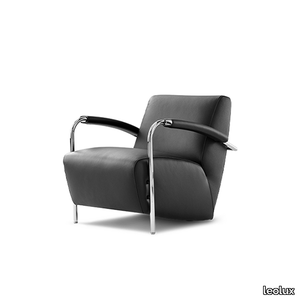
leolux > Armchair
Gerard Vollenbrock ontwierp Scylla met herinneringen aan ‘De Stijl’. Hij voorzag het ontwerp van een schitterend buisframe dat helemaal achter de rug doorloopt en stoere beklede armsteunen. Het zijn de kleine details en de perfectionistische afwerking die zorgen dat dit ontwerp ook na vele jaren gemakkelijk elke toets doorstaat.
Lloyd
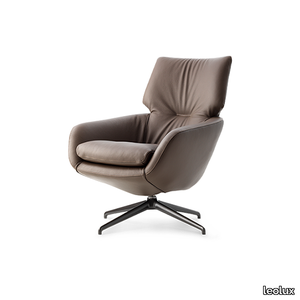
leolux > Armchair
This is Lloyd. A beacon of design. Sturdy and yet so inviting. With supple, almost nonchalant upholstery and traditional detailing, like decorative piping that highlights the powerful shape. Lloyd merges two different worlds – the Leolux commitment to comfort, cast in Gino Carollo's distinctive Italian design.
Kikko
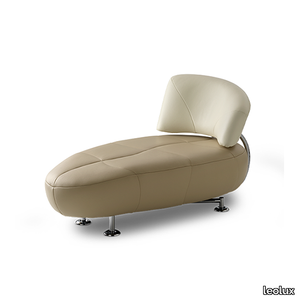
leolux > Armchair
Kikko will surprise you at first glance. Is it a chaise longue? Yes, but this multifunctional piece offers even more possibilities. By slightly lifting the back, it turns 90 degrees left or right. This turns the chaise longue into a comfortable seat with an extra seat next to it.
Jill
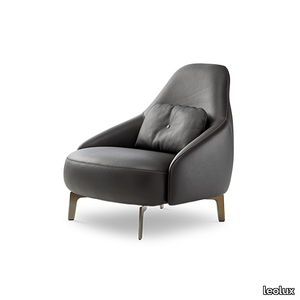
leolux > Armchair
This design is a reference to the past, inspired by luxury 19th-century hotel interiors. You can see Edward van Vliet's classic style in the armchair and chaise longue. He combines a touch of nostalgia with contemporary comfort, charming curves and elegant details.
K-wait armchair bouclè
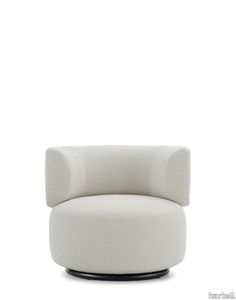
kartell > Armchair
The comfort of an embrace: the K-WAIT upholstered collection by Rodolfo Dordoni plays with the contrast between the formal simplicity of rigorous volumes and soft, rounded lines. The division between habitat and contract solutions is increasingly blurred in this collection too. The keyword is versatility. The wide range of delightful upholstery includes warm velvety fabrics, bouclé and other fabrics that, though plainer, always stand out for their striking weave. All fabrics are certified for contract use.
Bubble club armchair
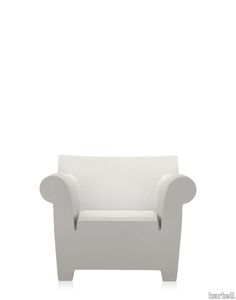
kartell > Armchair
Bubble Club is the industrial sofa in which rotational moulding technology has enabled Kartell to mass produce. A large two-seater sofa, characterised by the soft line of the armrests which contrast with the more rational line of the backrest; an essentia
Enzo Lounge chair

sofacompany > Armchair
Enzo is an armchair with a very modern and classic Scandinavian design. Here, focus is on simplicity, clean lines, and natural materials. The armchair has an wooden frame, loose soft cushions, and paper cord as an extra design wise detail.
Judi Lounge chair
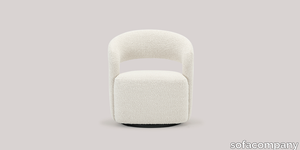
sofacompany > Armchair
Judi is a cool lounge chair inspired by the early James Bond movies. The chair is named after actor Judi Dench, who plays M. Judi is a glamorous and cool chair with fine, round shapes. The empty space in the backrest makes the design less bombastic and even more elegant.
Oscar Lounge chair
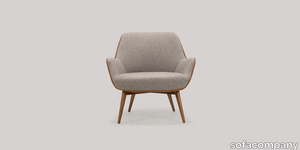
sofacompany > Armchair
Oscar is a small and light armchair with attractive curves and contrasts. The shell is wide and framed by the dark piping that set off the simple design of the chair. A cool chair with a rather elegant masculine look.
Otis Lounge chair
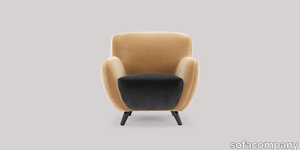
sofacompany > Armchair
With Otis the idea was to scale down the look of an old-school armchair to accommodate the small living tendency. This chair fulfills the need for a soft and embracing chair. With its round shape and low height, it looks welcoming and super cute.
UPHOLSTERY
A wide range of Upholstery and materials provided by our suppliers to satisfy your needs.
AI services
Fringe Chatbot | Image Finder | Fringe Dall-e | Area Analyzer


